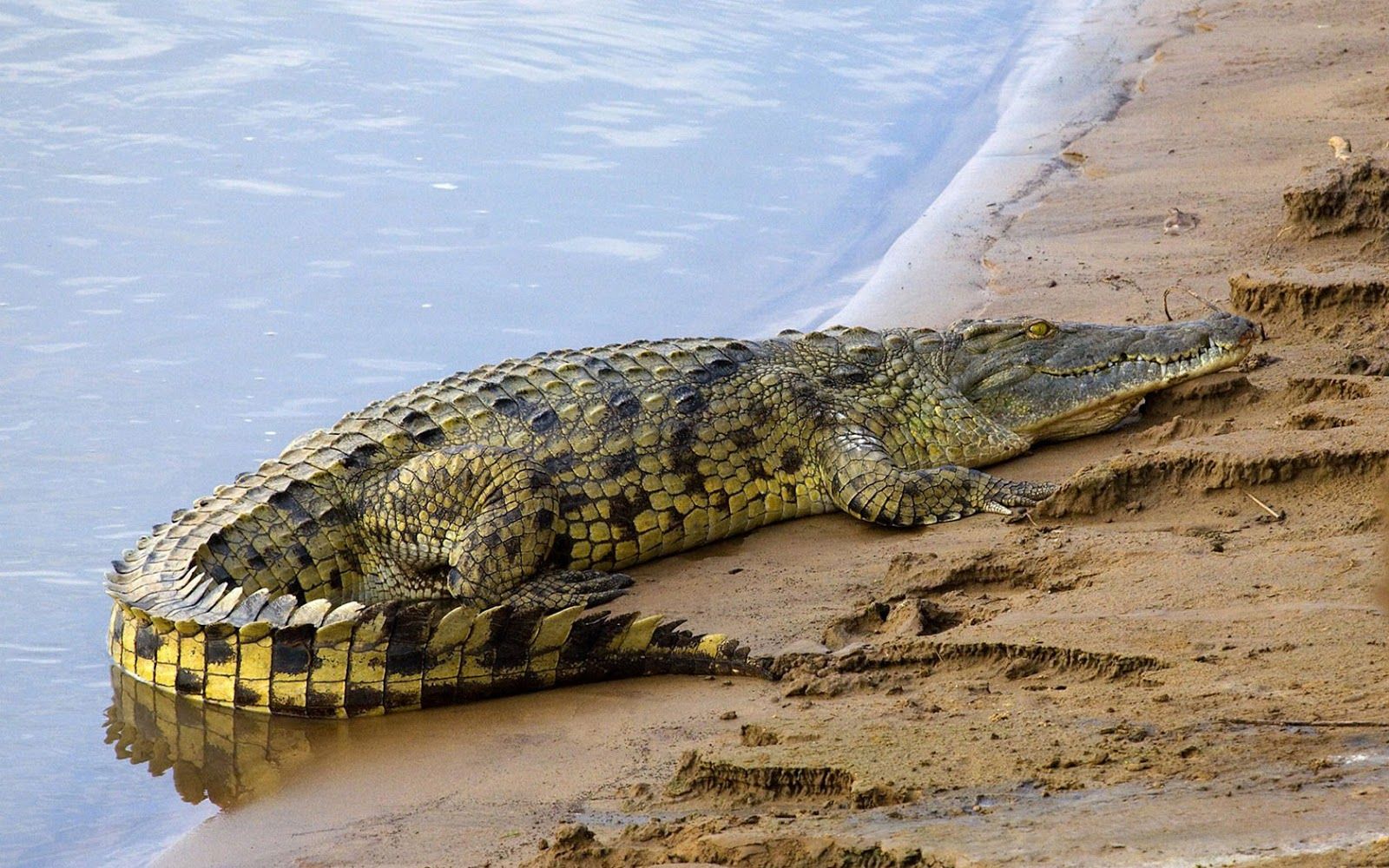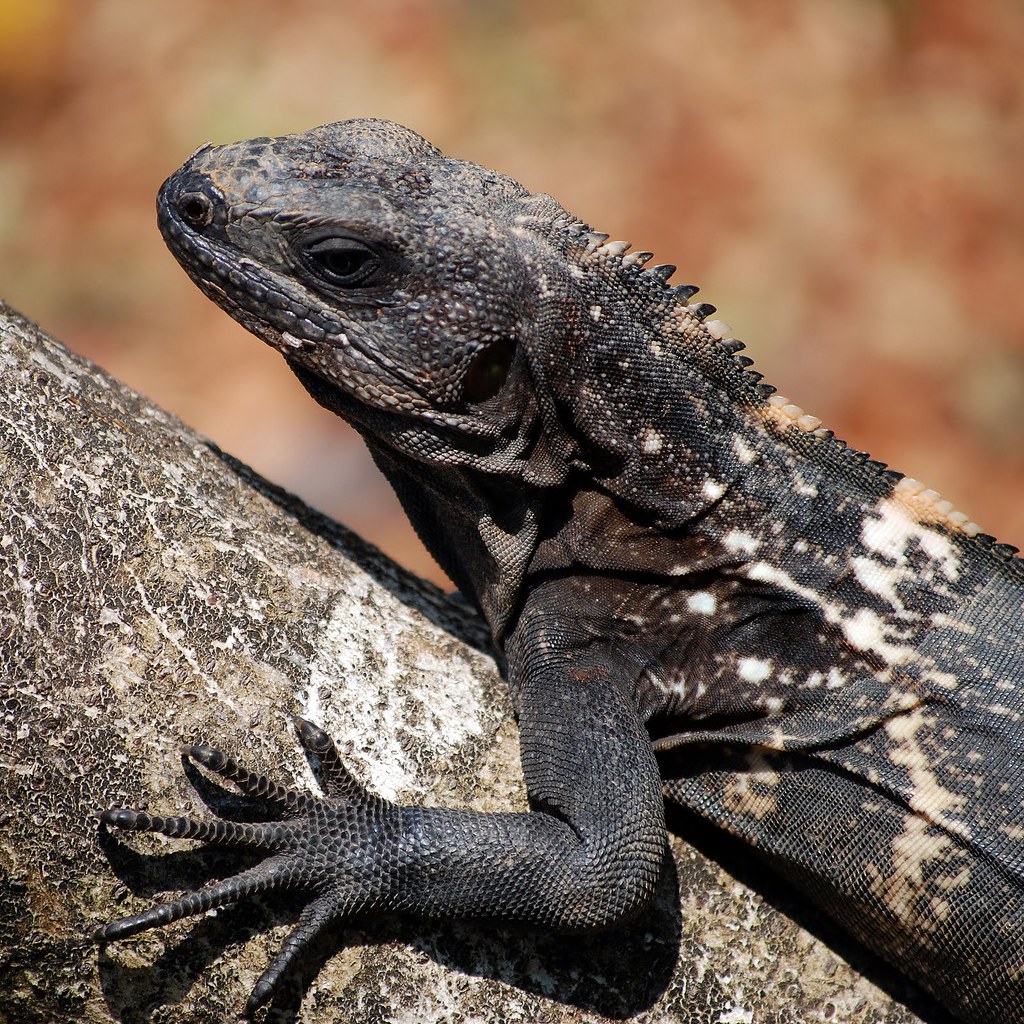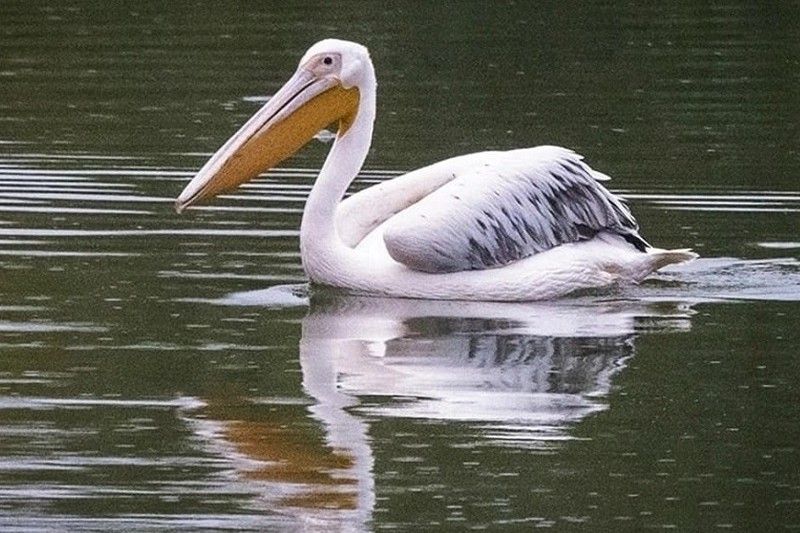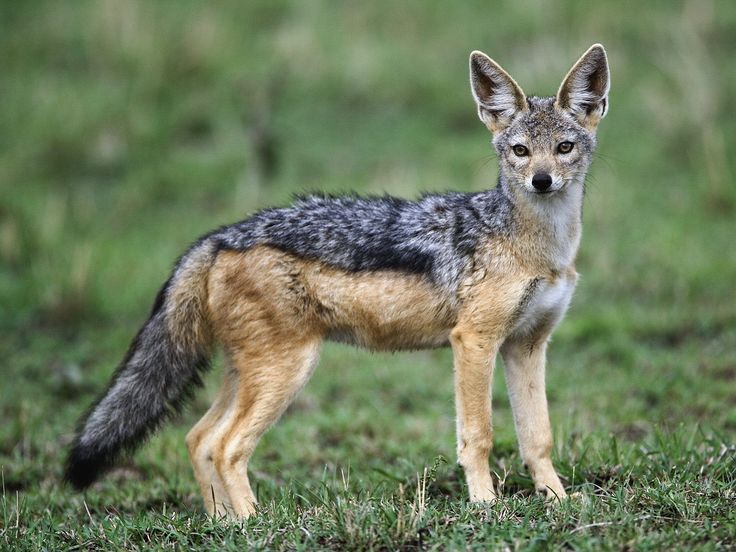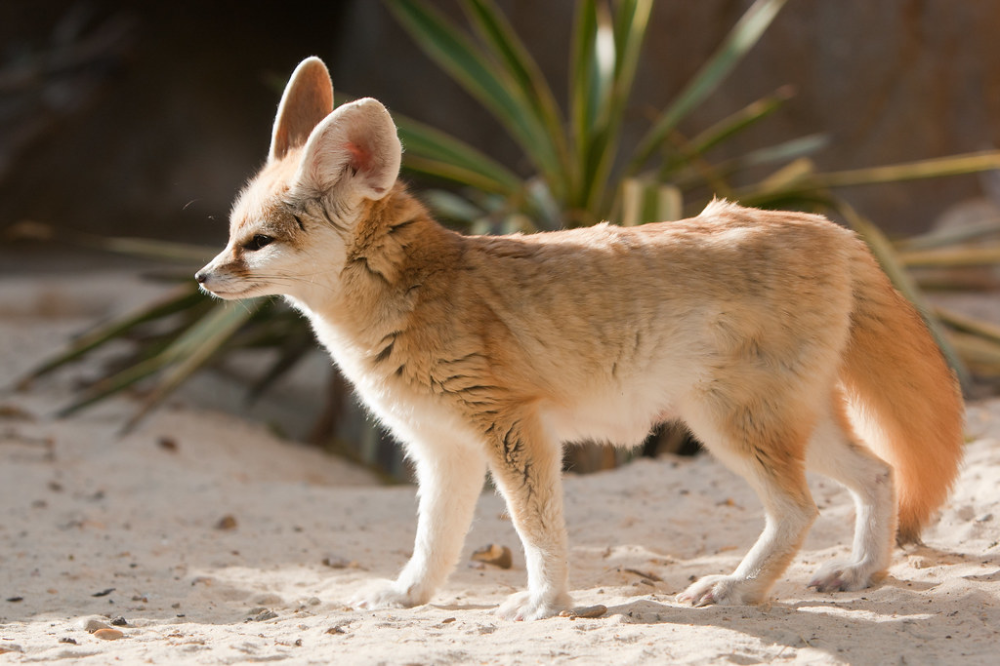Section 1: Desert Dwellers
The Nile Crocodile (Crocodylus niloticus)
The Nile crocodile, also known as Crocodylus niloticus, is a large reptile found throughout sub-Saharan Africa and parts of North Africa, including Egypt. This species has been present on our planet for over 250 million years, and it continues to thrive in its native habitats.
Physical Characteristics:
- The Nile crocodile can grow up to 23 feet (7 meters) in length and weigh as much as 1,000 pounds (450 kg), making them one of the largest reptiles on Earth
- They have a broad, long snout, with large nostrils positioned at the tip of their nose, allowing them to stay submerged while still being able to breathe
- Their scaly skin is grayish-green in color and is adorned with numerous bony plates called osteoderms
Habitat:
- Nile crocodiles are primarily aquatic animals, inhabiting rivers, lakes, wetlands, and coastal areas throughout sub-Saharan Africa
- They have a strong preference for calm waters with abundant vegetation, such as reeds, mangroves, or papyrus swamps
- In Egypt, they can be found in the Nile River and its delta region, where the water is brackish and there’s an abundance of fish and other aquatic life
Diet:
- Nile crocodiles are carnivores and feed on a wide range of prey, including large ungulates, antelopes, buffaloes, hippos, birds, reptiles, amphibians, and fish
- They use their powerful jaws to crush the shells of turtles and other hard-shelled animals, while also using their sharp teeth to tear flesh from bones
Breeding and Behavior:
- Nile crocodiles are social creatures that live in large groups called basks, with a dominant male leading the group
- They have an unique mating ritual where the male will grasp the female’s snout with his jaws, and then swim together while entwined in a ‘hug-like’ position
- Females typically lay around 50-60 eggs per clutch, which incubate for about two months before hatching
Conservation Status:
- The Nile crocodile is listed as a vulnerable species by the International Union for Conservation of Nature (IUCN)
- Habitat loss and degradation, hunting for their meat, skin, and organs, and human-wildlife conflict have contributed to the decline in population
- Conservation efforts are underway to protect their habitats, regulate hunting practices, and promote coexistence with humans
Native to Egypt’s southern regions, the Nile crocodile is an iconic species that inhabits rivers and wetlands
- The Nile crocodile, one of the most recognizable animals in Africa, has been a part of Egyptian ecosystems for millions of years.
- Native to Egypt’s southern regions, these incredible creatures are an integral component of the country’s diverse wildlife.
- They inhabit rivers and wetlands, where they have adapted to their environment with remarkable efficiency.
- The Nile crocodile is a formidable predator that plays a vital role in maintaining the balance of its ecosystem.
- Reaching lengths of up to 23 feet (7 meters) and weighing over 1,000 pounds (450 kilograms), these massive reptiles are awe-inspiring creatures.
- Despite their intimidating size and strength, Nile crocodiles are incredibly agile swimmers, able to reach speeds of up to 18 miles per hour (29 kilometers per hour).
- Their scaly skin is protected by a hard layer of keratin, which helps to prevent damage from the constant exposure to water and sediment.
- With their powerful tails and robust jaws, Nile crocodiles are capable of generating incredible force when attacking prey or defending themselves against predators.
- Native Egyptians have long revered these magnificent creatures, often associating them with fertility and rebirth.
- In fact, the ancient Egyptian goddess Wadjet was often depicted as a woman with the head of a crocodile, highlighting their significance in the country’s culture and mythology.
- Today, conservation efforts are underway to protect Nile crocodile habitats and prevent further decline in their populations.
- By preserving these incredible animals and their ecosystems, we can ensure the continued survival of this iconic species for generations to come.
The Spiny-Tailed Iguana (Sauromalus hispidus)
The Spiny-Tailed Iguana, also known as the desert iguana, is a fascinating species that inhabits the desert regions of North America and parts of South America.
Native to the Mojave Desert in southwestern United States and northern Mexico, this remarkable reptile has adapted remarkably well to its harsh environment, becoming one of the most iconic desert dwellers in the region.
Habitat and Distribution:
- The Spiny-Tailed Iguana inhabits arid and semi-arid regions, often found in areas with rocky outcrops, scrublands, and sandy dunes.
- Its range extends from the southern Mojave Desert to parts of Baja California, Mexico, where it thrives in the desert’s hot and dry conditions.
Physical Characteristics:
- The Spiny-Tailed Iguana is a medium-sized reptile, characterized by its distinctive spines running along its back and tail.
- Adults can grow up to 24 inches (60 cm) in length, including their tail, which they use for balance and communication.
Behavior and Diet:
- The Spiny-Tailed Iguana is a herbivore, feeding on a variety of desert plants, including cacti fruits, flowers, and leaves.
- They are known to be active during the day, basking in the sun to regulate their body temperature, and retreating to shaded areas at night for shelter and safety.
Conservation Status:
- The Spiny-Tailed Iguana is currently listed as “Least Concern” on the IUCN Red List, but its population is declining due to habitat destruction, climate change, and human activities such as mining and urbanization.
- Efforts are being made to protect their habitats and educate the public about the importance of conserving this unique species.
Interesting Facts:
- The Spiny-Tailed Iguana can live up to 20 years in the wild, making them one of the longer-lived reptiles in their habitat.
- They have a unique ability to store water in their body tissues, allowing them to survive for extended periods without drinking water.
In conclusion, the Spiny-Tailed Iguana is an incredible example of adaptability and resilience in the face of harsh desert conditions.
Its remarkable physical characteristics, behavior, and unique abilities make it a fascinating species that continues to captivate scientists and wildlife enthusiasts alike.
Also known as the spinytailed lizard, this reptile can be found in desert environments throughout Egypt
The Spiny-tailed lizard is a fascinating reptile that inhabits desert environments throughout Egypt. This remarkable creature has adapted to survive in one of the harshest climates on Earth.
Found in various parts of the country, including the Western Desert and Sinai Peninsula, the Spiny-tailed lizard is a common sight for those who venture into Egypt’s vast desert landscapes.
The Spiny-tailed lizard’s ability to thrive in these extreme conditions can be attributed to its unique physical characteristics. Its body is covered with tough, scaly skin that helps protect it from the scorching sun and harsh winds.
The most distinctive feature of this reptile, however, is its long, thin tail, which is equipped with sharp spines that deter predators. These spines are also useful for defense purposes, making it difficult for potential threats to get close.
Despite its defensive capabilities, the Spiny-tailed lizard is an omnivorous creature that feeds on a variety of plants and insects. Its diet consists mainly of algae, seeds, fruits, and small invertebrates like ants and beetles.
The Spiny-tailed lizard’s behavior is also worth noting. These creatures are primarily solitary animals and only come together during mating season. They are also known to be quite territorial, with each individual marking its territory using a unique scent.
In conclusion, the Spiny-tailed lizard is an incredible example of adaptability and survival in one of the most inhospitable environments on Earth. Its impressive physical features and fascinating behavior make it a remarkable creature that continues to captivate scientists and desert enthusiasts alike.
Bullet points summarizing key facts about the Spiny-tailed lizard:
- The Spiny-tailed lizard is found in desert environments throughout Egypt.
- It has adapted to survive in harsh conditions, including extreme temperatures and limited water availability.
- The creature’s scaly skin provides protection from the sun and wind.
- The long, thin tail is equipped with sharp spines for defense purposes.
- The Spiny-tailed lizard’s diet consists mainly of algae, seeds, fruits, and small invertebrates like ants and beetles.
Section 2: Water World
The Pelican (Pelecanus onocrotalus)
The pelican is a majestic waterbird that thrives along the banks of rivers and coastal areas throughout Africa, including Egypt. It has distinctive webbed feet that enable it to walk comfortably on land as well as in water. The bird’s plumage is white with black wing tips, giving it an elegant appearance when seen gliding effortlessly over the surface of a serene body of water.
Its impressive wingspan can reach up to 2.5 meters (8 feet) making it one of the largest birds in Egypt and possibly Africa. The bird’s large bill, which is pinkish yellow in colour, serves as both a fishing instrument and a means of preening its feathers. It has an impressive ability to hold water in its bill while feeding on fish.
It has a unique way of catching fish by scooping them up with its long beak before swallowing them whole. The pelican has become such an important part of Egypt’s ecosystem due to the role it plays as a predator controlling populations of fish and other aquatic animals, which can sometimes lead to problems in water sources.
However, there are concerns over habitat destruction and degradation, pollution from human activities, and climate change affecting breeding and nesting habits. This has led some conservation efforts to help protect and maintain the natural habitats of this iconic bird species. As a result of these initiatives, numbers of pelicans have been stable in recent years.
The Pelican (Pelecanus onocrotalus) is an incredibly resilient bird that continues to thrive in its habitats across Africa including Egypt despite challenges it faces. This bird’s adaptability and resourcefulness are truly remarkable, allowing it to survive with grace under pressure.
A symbol of Egypt’s wetlands, the pelican is a large waterbird known for its distinctive pouched bill
- The second section of this article focuses on the “Water World,” a fascinating aspect of Egypt’s unique wetland ecosystem.
- A symbol of this watery world is the pelican, a large waterbird that has been thriving in these environments for centuries.
- One of the distinctive characteristics of the pelican is its uniquely shaped pouched bill, which allows it to scoop up fish and other prey from the water’s surface with remarkable efficiency.
- The pelican’s pouched bill is an adaptation that enables it to gather a large amount of water along with its food, allowing it to filter out excess water before swallowing its catch.
- This impressive feeding mechanism allows pelicans to thrive in environments where other birds might struggle to find sustenance, making them a resilient and successful inhabitant of Egypt’s wetlands.
- The pelican is an iconic bird species that can often be spotted in large numbers along the Nile River and its delta region, where the water is abundant and food is plentiful.
- Its impressive size, distinctive appearance, and fascinating feeding habits have made it a popular subject among birdwatchers and nature enthusiasts alike.
- However, like many other species native to Egypt’s wetlands, the pelican is also facing challenges in recent years due to habitat loss, pollution, and climate change.
- As a result, conservation efforts are underway to protect this magnificent bird and its habitats, ensuring that it continues to thrive for generations to come.
- The story of the pelican serves as a poignant reminder of the importance of preserving Egypt’s unique wetland ecosystem, which provides a home to countless animal species and supports the country’s rich biodiversity.
The Egyptian Goose (Alopochen aegyptiacus)
The Egyptian Goose (Alopochen aegyptiacus) is a large perching duck that inhabits wetlands and grasslands in Africa, Europe, and parts of Asia, including Egypt. It is a member of the family Anatidae and is one of the few species of waterfowl that can be found in the wild year-round.
The Egyptian Goose has a distinctive appearance, with its brownish-black plumage, white patches on the face, and a long neck. The adult bird measures around 66-74 cm (26-29 in) in length and weighs between 1.5-3.0 kg (3.3-6.6 lb). Its wingspan can reach up to 130 cm (51 in), making it an impressive sight when in flight.
The Egyptian Goose is a herbivorous bird, feeding on aquatic plants, grasses, and grains. It is known to form large flocks, often with other species of waterfowl, and can be seen foraging in fields, wetlands, and even agricultural areas. During the breeding season, the male Egyptian Goose will engage in displays of courtship behavior, including loud calls and impressive aerial performances.
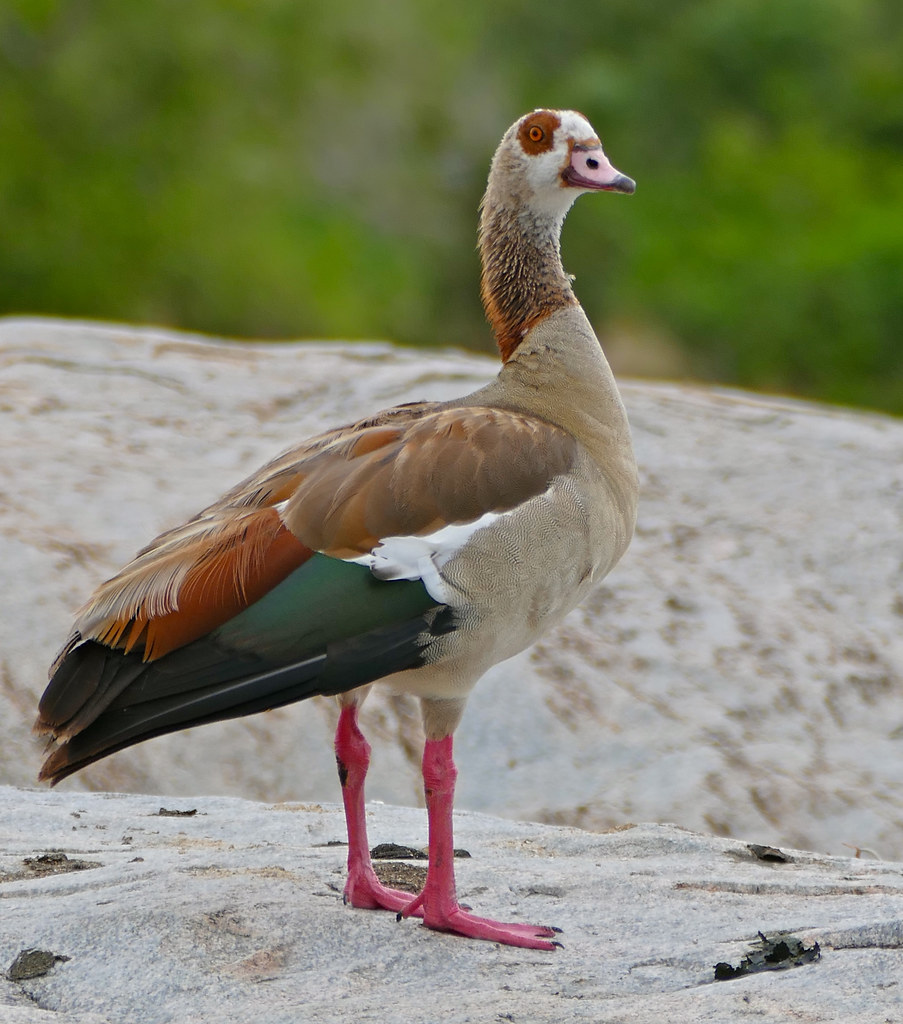
The Egyptian Goose is widely distributed across Africa, with populations found in sub-Saharan Africa, as well as parts of Europe, Asia, and North America. It has been introduced to many regions outside its native range and can be considered an invasive species in some areas. In Egypt, the Egyptian Goose is a common sight, particularly in urban areas, where it can be seen foraging in parks, gardens, and agricultural fields.
In terms of conservation status, the IUCN Red List classifies the Egyptian Goose as Least Concern. However, its population trends are declining in some parts of Europe, due to habitat destruction, hunting, and other human activities. Efforts are being made to protect and conserve this species, including habitat restoration, research, and education programs.
Common in Nile River delta and lake areas, this bird species is highly adaptable and found across various habitats
The Nile River delta and lake areas are home to a diverse range of bird species, but one that stands out for its adaptability and wide distribution is the Water World.
This remarkable bird is common in the Nile River delta and lake areas, where it can be found in various habitats such as wetlands, marshes, and even urban areas like Cairo.
One of the most distinctive features of the Water World is its ability to adapt to different environments and ecosystems. It has been known to thrive in a range of habitats, from freshwater lakes and rivers to brackish lagoons and mangrove swamps.
The Water World’s versatility allows it to survive in areas with varying levels of water depth and salinity, making it an incredibly resilient species.
Some of the key characteristics that contribute to its adaptability include its strong swimming abilities, allowing it to navigate through dense vegetation and shallow waters; its ability to dive and forage on aquatic plants and animals; and its remarkable capacity to absorb and store water in its body.
As a result of its widespread distribution and adaptability, the Water World is found across various habitats throughout Egypt, including the Nile River delta, Lake Nasser, Lake Qarun, and even in urban areas like Cairo and Alexandria.
This bird’s impressive range and ability to thrive in different environments make it an iconic species in Egyptian wildlife, and a popular subject for ornithologists and nature enthusiasts alike.
Section 3: Furry Friends
The Alexandrian Jackal (Canis aureus)
The Alexandrian jackal, also known as Canis aureus, is a species of jackal native to Africa and Asia, with a significant presence in Egypt.
This canid has been an integral part of Egyptian ecosystems for centuries, playing a crucial role in maintaining the balance of its environment through predation on small mammals and other animals that might otherwise compete with agricultural crops for resources.
Characterized by their golden fur and dark-tipped ears, Alexandrian jackals are generally nocturnal, though they can be active during twilight hours and occasionally during the day when undisturbed or in areas of low human activity.
Their diet primarily consists of carrion, but they also hunt for small mammals like rodents, hares, and birds; occasionally, they scavenge garbage and eat crops, which has led to conflicts with farmers who view them as pests.
These animals often live in pairs or small family groups, typically ranging in size from two to six individuals. Female Alexandrian jackals usually give birth to between one and three pups after a gestation period of approximately 60-80 days.
Rarely, the male may contribute to pup-rearing by providing food, but in general, both parents are responsible for caring for their young.
Historically, these jackals have been revered for their unique role in Egyptian society, symbolizing both protection and destruction. However, their status has become increasingly threatened due to habitat loss and hunting; conservation efforts focus on preserving the remaining natural habitats while educating local communities about the importance of these animals within their ecosystems.
The Alexandrian jackal is a vital component of Egypt’s rich biodiversity, serving as an ambassador for its unique ecosystem. Efforts to protect this species are critical not only for preserving wildlife but also for maintaining ecological balance and ensuring a healthy coexistence between humans and animals in Egypt.
Also known as the golden jackal, this canid species is widely distributed in Egypt’s grasslands and deserts
The Golden Jackal, also known as Canis aureus or Corso, is a medium-sized canine species native to various parts of the world, including Africa and Asia. In Egypt, it is widely distributed in grasslands and deserts.
This adaptable species has been found in a wide range of habitats, from temperate forests to arid deserts. Its ability to thrive in diverse environments makes it a successful and widespread species throughout its range.
The Golden Jackal is known for its golden-brown coat with darker tips on the ends of its hair, giving it a distinctive appearance. It also has a bushy tail and erect ears that are typically black or dark brown.
As an omnivore, the Golden Jackal’s diet consists of a variety of food sources including small mammals, fruits, vegetables, insects, and even human waste in urban areas. Its adaptability to different environments allows it to exploit various food sources, making it a resilient species.
In Egypt, Golden Jackals often live in pairs or alone and are primarily nocturnal, meaning they are active at night and rest during the day. They have been known to den in burrows or rock crevices, protecting themselves from extreme temperatures and other potential threats.
Conservation efforts for the Golden Jackal vary across its range, with some countries implementing measures to protect their habitats and prevent human-wildlife conflict. However, in Egypt, there is limited information on specific conservation initiatives targeting this species specifically.
The golden jackal’s ability to adapt to different environments has allowed it to thrive in a wide range of habitats. Its unique physical characteristics and diverse diet have enabled the species to occupy various ecological niches throughout its range, making it an important component of many ecosystems.
The Fennec Fox (Vulpes zerda)
The Fennec fox, scientifically known as Vulpes zerda, is a small desert-dwelling mammal native to North Africa and the Middle East, including Egypt. It belongs to the Canidae family, which comprises canines such as wolves and dogs.
The distinctive physical feature of the fennec fox is its oversized ears, which serve as a vital cooling system in the scorching desert climate. These long ears allow for maximum heat loss, preventing the animal from overheating in temperatures that would be unbearable for most mammals.
Fennec foxes have thick fur coats to protect them against extreme cold at night and intense sunlight during the day. Their coats are often tawny or sandy-colored, allowing them to blend in with their desert surroundings.
Adult fennec foxes typically weigh between 1.5 to 3.5 kg (3.3-7.7 lb) and measure approximately 45-55 cm (18-22 in) in length. Despite their small size, they are highly active and energetic animals that thrive in the harsh desert environment.
Fennec foxes are omnivores, feeding on a variety of foods including insects, fruits, vegetation, and small mammals. In Egypt, their diet may also consist of rodents, reptiles, and amphibians. Their unique adaptations allow them to survive for extended periods without water, obtaining moisture from the food they consume.
In Egyptian culture, fennec foxes are considered an important species due to their symbolic representation in ancient mythology. They were associated with various gods and goddesses, such as Anubis, who protected the dead, and Set, a god of chaos and disorder.
Today, conservation efforts focus on protecting fennec fox habitats, particularly in Egypt’s Sahara Desert. Threats to their populations include habitat destruction due to urban development and mining activities. As awareness about these desert-dwelling creatures grows, so does the need for responsible land-use planning and wildlife management practices.
A desertadapted species with oversized ears, the fennec fox inhabits Egypt’s arid regions.
The desert-adapted species, the Fennec Fox, inhabits Egypt’s arid regions. Its distinctive feature is its oversized ears, which play a crucial role in keeping it cool in scorching temperatures.
The fur of the Fennec Fox is thick and soft, with a silky texture that provides excellent insulation against the cold night temperatures and the heat of the day. Its coat is a mix of brown and white colors, allowing it to blend in seamlessly with its desert surroundings.
Fennec Foxes are known for their unique digging behavior, where they use their sharp claws to excavate burrows in sandy dunes. These burrows serve as shelter from the harsh weather conditions, predators, and provide a safe place to raise their young.
The diet of the Fennec Fox consists mainly of insects, small mammals, and plant life. Its long snout allows it to sniff out food underground, while its sharp teeth enable it to crush hard-shelled insects with ease.
In Egyptian culture, the Fennec Fox is considered a symbol of fertility and prosperity. Its ability to thrive in harsh desert conditions has earned it a revered status among locals, who often view it as a good omen for their agricultural endeavors.
Conservation efforts are underway to protect the Fennec Fox population from habitat loss and human persecution. Education programs have been implemented to raise awareness about the importance of preserving this unique species and its desert ecosystem.
- 10 Fascinating Facts About Caribbean Culture - September 30, 2024
- 10 Countries Without Universal Healthcare - September 30, 2024
- 10 Examples Of Genetic Hybrids - September 30, 2024


